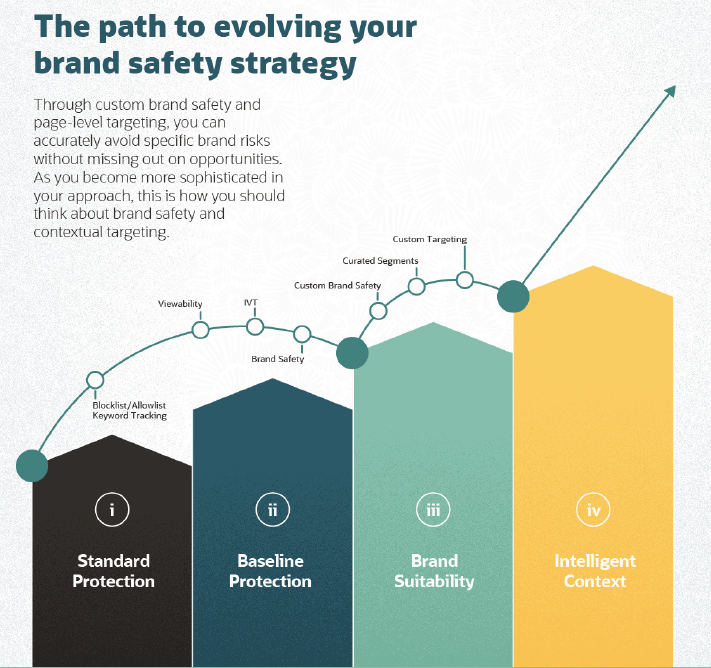The Japan & APAC Cookieless Future: Q&A with Alfonso Asensio, Oracle
by Mathew Broughton on 8th Apr 2021 in News


In association with Oracle.
Following the detailed discussions at the recent MadTech Japan event, ExchangeWire speaks to Alfonso Asensio, Regional Director - Japan, Oracle Advertising, to discuss alternative forms of marketing and the role of technology providers in JAPAC markets as we enter the cookieless future.
What are the key alternative targeting solutions for JAPAC marketers going forward in the absence of third-party cookies? What are the respective advantages and disadvantages of these?
What we are seeing now is not a cookie versus no cookie situation exclusive to the JAPAC market, instead it's a confluence of a few trends. On one side, we have the privacy laws and regulations that have altered the landscape, such as GDPR and CCPA. Then obviously we have restrictions on the universal identifiers, we are all very used to using cookies or mobile IDs to target our prospects online. Then the overarching and the most important trend here is the increasing loss of consumer trust, which we need to regain as an industry.
How does the future look? That everybody's question. My thinking is that there will be a portfolio of solutions and there's not going to be one magic bullet that solves the issue for everybody. We were using a certain type of technology that has evolved and changed, now we need to come up with different types of solutions that combine with that to provide a full spectrum of marketing reach and depth for advertisers. So we will have identity-based solutions such as those being developed by The Trade Desk, LiveRamp, and publisher collaborations. Secondly, there will still be anonymous ID-based segmentation. Google is a big part of this, but it's not going to constitute the entire open programmatic anonymous environment, so some form of cookies will still exist in the ecosystem alongside mobile IDs, despite the recent moves from Apple. The third, which we are particularly focused on, is contextual solutions, where you are looking at the content of a page and pairing that up with the mindset of the consumer to try to get a sense of whether they are interested in a company's messaging at any given moment. Obviously contextual has been around for a long time, now it's evolving into something very interesting. It's becoming very data-driven and very insightful.
The evolution of brand safety and context in advertising
How are industry players in Japan specifically adapting to the upcoming cookieless future?
In Japan there are a lot of conversations taking place about the cookieless future, however there is less information about possible solutions here compared to other territories. Europe had to catch up with alternative solutions because of GDPR, so the level of information is very high. JAPAC as a whole is doing well, however I think in Japan we are being a bit reactive overall. Now is a good opportunity to speed up the conversation because the changes are happening very quickly. I have full confidence in Japan. It's an environment where even if we are slower initially we can catch-up quickly, but I will be happier when the alternative solutions in the cookieless future, including contextual, are brought to the forefront.
How can brands and publishers best leverage new opportunities in creative and cross-channel advertising, brought about by the deprecation of the third-party cookie?
We get so caught up on the technology and cookie conversations, but at the heart of the ecosystem the needs of the brands and the publisher are not going to change. The brands still want to reach the right people, at the right time, in the right location. Publishers still want to provide relevant content to their audiences and to also monetise their work. We need to keep those needs in mind and think beyond the scope of universal identifiers or anything like that. The key point as an industry is how do we regain the trust of the consumer? How do we get that consumer comfortable with coming into an environment, sharing their information, and getting services in return?
The way we see that happening is via three initiatives. The first is through audience identifiers, especially offline data, which will be combined in different ways with multiple partners, and designed to work in a consumer-centric and privacy-compliant environment. The second is contextual intelligence, where we essentially have page content align with the mindset of the consumer as previously discussed. The third one is objective measurement. You can run all the campaigns you want, you can do excellent targeting, now how do you measure the impact of that response? We use a privacy-first approach that is measuring real people across multiple platforms. Going forward, that contextual measurement is going to define the future of the advertising piece.
Besides targeting, how will the deprecation of the third-party cookie affect facets of brand marketing such as brand safety and suitability?
The removal of third-party cookie-based targeting has put focus back on contextual solutions and contextual intelligence. Previously it was just a technology that allowed brands and publishers to connect a consumer audience in different environments, whereas now contextual intelligence and also brand suitability are becoming more centre-stage, largely because the companies are looking for alternatives as a result of the cookie conversation. Anonymous identifiers work great for targeting, but they did not do anything to prevent an ad from appearing in a negative or harmful context, so they didn't have that brand safety dimension.
One thing that contextual intelligence does is that it allows marketers to be both positive or negative so they can either target or block content. Contextual solutions traditionally have been very blunt, relying a lot in keyword-blocking or URL-blocking, which might just be the bare minimum brand safety solution. A firewall that covers a brand from immediate damage, but that also comes with a price. For example, our studies found that near 76% of all content featuring the word "coronavirus" last year was actually relevant and safe, but was heavily blocked by keyword lists, thus refining that blocking capability is very sensible otherwise you lose out on opportunities. We provide contextual intelligence that goes beyond that URL- and keyword-blocking, becoming more discerning and more accurate.
How can brands and technology providers strike the right balance between leveraging first-party data, alongside alternative privacy-compliant forms of targeting?

Alfonso Asensio, Regional Director – Japan, Oracle Advertising
First-party data has always been there and has always been important, but the industry was dazzled by third-party cookies because they offer the reach and the scale. There was a certain complex within companies saying, "My first party data might not be good enough, let me just go and get some additional data." That made sense, but the current circumstances have changed the viewpoint to, "What is the best way to leverage my first-party data". The entity which knows who the best customer for any company is always going to be the company itself. Coca Cola will always be best placed to know who the best Coca Cola customers are. Marketers need to find a way to leverage that first-party data and put it into action. Obviously, lack of reach is going to be a drawback because you are never going to be able to find everybody who likes your brand, and you are always going to have to rely on some other tools to help find new prospects and consumers. That's where contextual can come into play, in that it's privacy compliant and non-reliant on cookie solutions. If it's powered by your first-party data, suddenly you are taking it to a new level in what you can do with it.
The other piece we are seeing is the confluence in ad tech and martech. Traditionally, first-party data and CRM systems were kept in Box A, and then third-party data and advertising efforts, which were put in Box B. Where you had ad tech solutions bringing in all the leads and then passing them over into MarTech CRM systems running brand and loyalty campaigns, now there's going to be more of a seamless connection between the two of them. This is fuelled by the need to reach a new prospect based on intelligence and first-party data, and then integrate this prospect into the backend technology solution. These are the consumers we want to engage with, why should we not put them together?
What is the role of technology providers and agencies in educating JAPAC-based marketers on how to navigate the post-cookie environment and bring together their ad tech and martech solutions?
There is a need to educate and evangelise the market on what is going on. In our role as technology providers, we are looking at tech changes every day. A brand or a publisher has other things to worry about, so they cannot be as invested in these conversations, thus it makes sense that we do our best to support them. About eight years ago when I started working with tech providers in Japan, we had a similar situation where data-driven third-party targeting was something new. We were going to different companies and saying, "Look, you're paying for your media, now we are going to ask you to also pay for data”. That conversation was tricky initially, but then people realised that, rather than trying to cover the entire internet with an ad, if they invested in identifying who their right audiences are their return of investment will be much higher.
We are in a similar situation now in that we are well positioned to educate brands, publishers, and other players in the ecosystem on how to move to the next stage, because these changes are happening so rapidly that they are often hard to keep up with. There's a good opportunity for technology companies to come and say, "This is what is happening, this is how we can help." It might not work for everybody, and brands, publishers, etc may want to talk to many other technology providers and fellow companies, but that engagement is a good thing for the industry.
For more about brand suitability, visit Oracle.com
APACContextualCookiesJapanPrivacy









Follow ExchangeWire